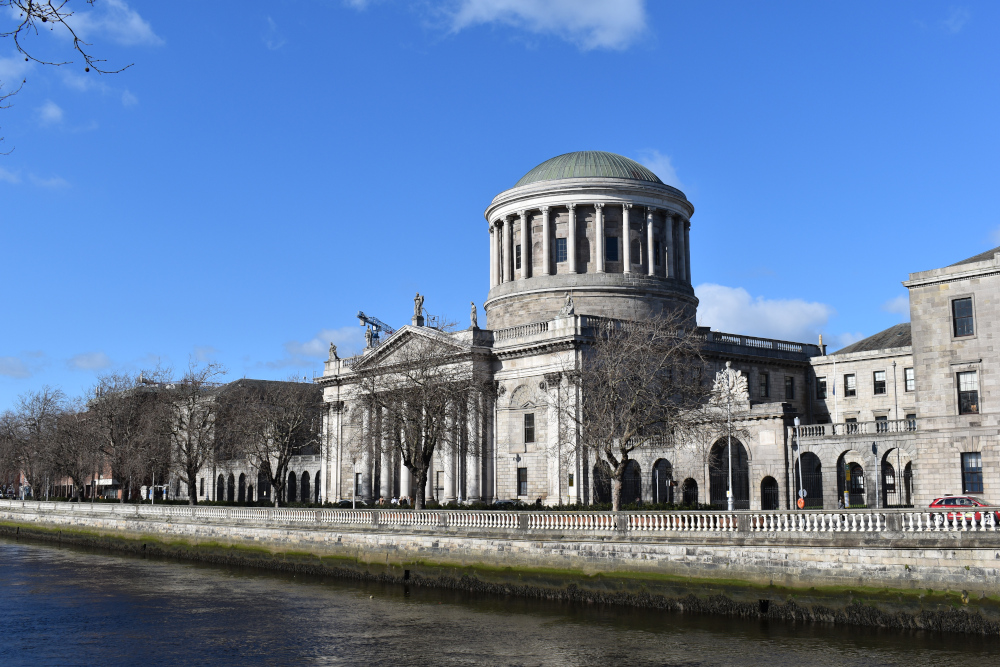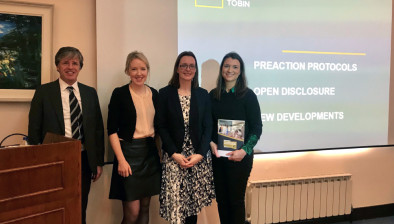High Court: Woman fails in medical negligence action against hospital alleging cancer misdiagnosis

The High Court has dismissed a plaintiff’s medical negligence action against the HSE for alleged failures in diagnosing breast cancer. The plaintiff had originally felt two lumps in her breast but this was diagnosed as a simple cyst in May 2017. However, by October 2017, she maintained that the lumps had gotten bigger. She was subsequently diagnosed with breast cancer.

About this case:
- Citation:[2023] IEHC 194
- Judgment:
- Court:High Court
- Judge:Ms Justice Mary Rose Gearty
Delivering judgment in the case, Ms Justice Mary Rose Gearty did not accept the plaintiff’s expert evidence which relied on a well-known research paper that measured the rate of growth of breast cancer. It was held that there were multiple issues with the paper which rendered it an unreliable metric to conclude that a cancer had been missed by the clinicians.
Background
The plaintiff was a 35-year-old woman in 2017. In March, she felt two hard lumps in her right breast and scheduled an appointment with Letterkenny University Hospital. The appointment took place in May and she was examined based on the triple assessment method. This method was an accepted practice for breast cancer screening which included clinical, radiological and histopathological assessment of the breast.
The clinician recorded a 15mm lump (a pea-sized lump) in the lower outer quadrant of the plaintiff’s breast. He could not palpate the smaller, peppercorn lump. He noted the measurements and location of the lump. It was marked as “S3”, meaning it was “probably benign but cancer is not ruled out.”
The plaintiff was then referred to the radiologist, who took images by mammogram and ultrasound. The radiologist could identify the pea-sized lump (measured by software as 12mm) as being “R2”, or benign.
In the following months, the plaintiff outlined her impression that the lumps got bigger and formed together. She also found another lump in her armpit in September 2017. She had another appointment in October 2017.
On clinical examination, the same clinician found a lump measuring 4cm in a different position in the breast. She was sent for a biopsy. Subsequently, the clinician confirmed that the plaintiff had HER2-positive breast cancer, with a tumour in her breast.
The plaintiff was treated with chemotherapy and had a double mastectomy. She became cancer-free. Following treatment, she considered her initial assessment to be substandard and that she should have been diagnosed with cancer in May 2017 if certain proper procedures had been followed.
In particular, it was said that the pea-sized lump identified in March was cancer and not a cyst. The plaintiff relied on the location of the tumour as evidence of this. In turn, the court heard extensive evidence on scientific research for calculating the growth of a tumour.
The plaintiff’s expert relied on a paper (known as the Peer Paper) which was published in 1993. It measured the rate of growth of breast cancer tumours in 289 women and had been used for decades in a medico-legal context to determine the likely “doubling time” of breast cancer.
The “doubling time” referred to the amount of time it took for a tumour to double in volume across two measured points in time. The plaintiff’s expert outlined that, from May to October 2017, he calculated the doubling time to be 45 days. The range for doubling time contained in the Peer Paper was 44 to 147 days.
The HSE expert strongly contested the reliability of the Peer Paper. One of the arguments against the Peer data was the Goldilocks phenomenon, whereby a slow doubling time indicated that the cancer was not growing aggressively so a lack of early diagnosis made little difference, while a fast doubling time would suggest that the cancer was undetectable and grew very quickly.
In this regard, the HSE’ expert was critical of the fact that the Peer Paper only considered the growth of cancers which were identifiable between one scan and the next. The HSE outlined its position that the cancer in the present case was “interval cancer,” meaning that the cancer grew between the May and October screenings.
High Court
Ms Justice Gearty outlined the extensive expert evidence in the case. The evidence is too lengthy to recite in this summary. It was noted that the plaintiff’s case depended on the reliability of the 45-day doubling time, since this would prove that there was an identifiable cancer in May which got substantially worse by October.
The court held that the plaintiff’s clinical expert (whose calculated the 45-day doubling time) was not as reliable as the defendant’s witness in respect of his logic or approach to the case. In particular, the court held that there was no evidence of how the 45-day doubling time was calculated and it was suggested that the time was chosen to support the plaintiff’s case.
The court noted that the 45-day doubling time was applied to the tumour in order to claim that the pea-sized lump was the cancer. However, the court could not make this assumption, it was held.
The court also outlined deficiencies in the Peer Paper, which had been noted in other cases but not contested (see Freeney v. Health Service Executive [2020] IEHC 719). It was said that the Paper’s data had a bias towards slower growth in cancer and discounted the possibility that cancer could grow very aggressively. Further, the plaintiff’s expert had previously given evidence against the Peer Paper, stating it “was only a guide” (see Rossiter v. Donlon [2019] IEHC 105).
The court pointed out that the plaintiff had made the case that the lump examined in May and October was the same, which made the reliance on the doubling time all the more critical. By the end of the expert evidence, however, it was suggested that the peppercorn lump was the potential cancer, which was contradicted by the expert’s own calculations based on the Peer Paper.
In applying the rules on assessing expert evidence, the court held that the plaintiff’s expert “espoused the plaintiff’s case too closely”. It was said that “his evidence was affected by his cleaving to the plaintiff’s account and appearing to marry the Peer data to that account rather than considering doubling time as a science in isolation” (see Duffy v. Brendan McGee & Anor [2022] IECA 254).
Ms Justice Gearty considered the radiologist evidence that the 15mm lump was a cyst and accepted that cysts presented very differently from tumours. When coupled with the infirmity of the Peer data, the court held that it could not determine that a cancer was misdiagnosed by the hospital.
While the plaintiff held the genuine view that the lumps in May and October were the same, the court held that the medical imaging and notes of size and location were more reliable evidence.
Conclusion
It was held that the plaintiff’s expert relied on the Peer data “without sufficient latitude to incorporate the possible range of doubling times indicated in later papers and without factoring in the bias in the Peer data”. Accordingly, the reliability of his evidence was reduced.
The plaintiff failed to establish that there was an identifiable 15mm cancer in May or that the pea-sized lump was the same as the cancer detected in October. It was more likely that the 12mm cyst (observed and recorded by the radiologist) caused the lump. The court was satisfied on the evidence that the radiologist did not completely miss a 15mm tumour or mistake it for a simple cyst.
No calculation was done on the growth of the cancer other than the “carefully chosen 45-day doubling time”. The court said the Goldilocks phenomenon was apparent in the Peer Paper, stating “the lump is exactly the right size but only if you use the 45- day doubling time. Any other rate and the size of the lump changes and the theory that the pea-sized lump in May was the tumour collapses as a lump bigger or a smaller than a pea is not consistent with the facts the Plaintiff must prove.”
Further, it was pointed out that the Peer Paper only monitored women over 41 from 1993. There was no evidence that a double time faster than the Peer data would have meant the cancer was detectable.
The case was dismissed.
Crumlish v. Health Service Executive [2023] IEHC 194











